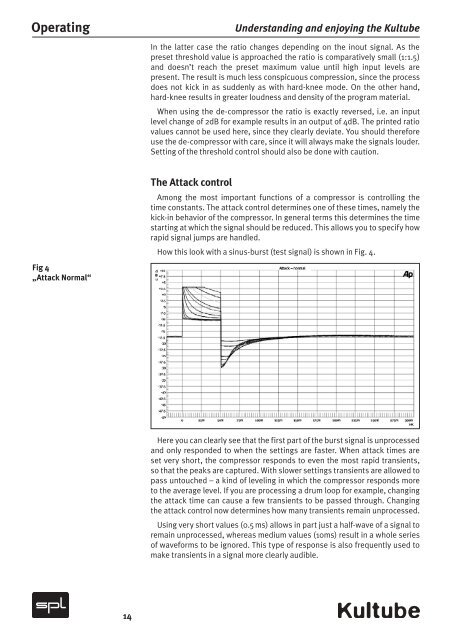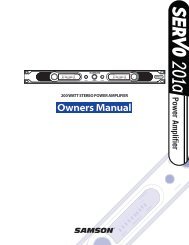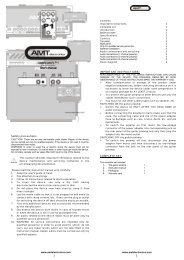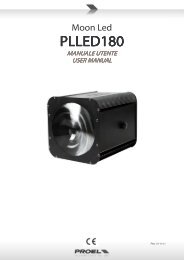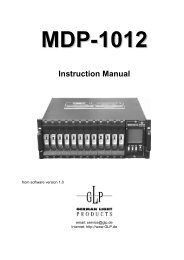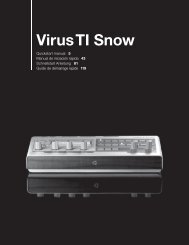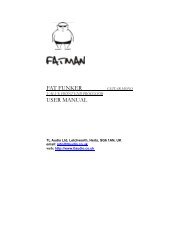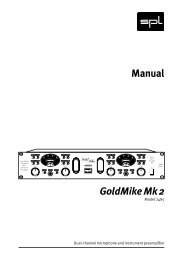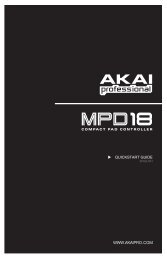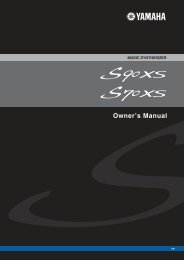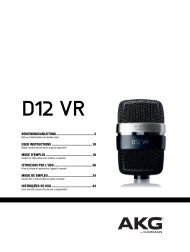Kultube
Kultube
Kultube
You also want an ePaper? Increase the reach of your titles
YUMPU automatically turns print PDFs into web optimized ePapers that Google loves.
Operating<br />
Understanding and enjoying the <strong>Kultube</strong><br />
In the latter case the ratio changes depending on the in0ut signal. As the<br />
preset threshold value is approached the ratio is comparatively small (1:1.5)<br />
and doesn’t reach the preset maximum value until high input levels are<br />
present. The result is much less conspicuous compression, since the process<br />
does not kick in as suddenly as with hard-knee mode. On the other hand,<br />
hard-knee results in greater loudness and density of the program material.<br />
When using the de-compressor the ratio is exactly reversed, i.e. an input<br />
level change of 2dB for example results in an output of 4dB. The printed ratio<br />
values cannot be used here, since they clearly deviate. You should therefore<br />
use the de-compressor with care, since it will always make the signals louder.<br />
Setting of the threshold control should also be done with caution.<br />
Fig 4<br />
„Attack Normal“<br />
The Attack control<br />
Among the most important functions of a compressor is controlling the<br />
time constants. The attack control determines one of these times, namely the<br />
kick-in behavior of the compressor. In general terms this determines the time<br />
starting at which the signal should be reduced. This allows you to specify how<br />
rapid signal jumps are handled.<br />
How this look with a sinus-burst (test signal) is shown in Fig. 4.<br />
Here you can clearly see that the first part of the burst signal is unprocessed<br />
and only responded to when the settings are faster. When attack times are<br />
set very short, the compressor responds to even the most rapid transients,<br />
so that the peaks are captured. With slower settings transients are allowed to<br />
pass untouched – a kind of leveling in which the compressor responds more<br />
to the average level. If you are processing a drum loop for example, changing<br />
the attack time can cause a few transients to be passed through. Changing<br />
the attack control now determines how many transients remain unprocessed.<br />
Using very short values (0.5 ms) allows in part just a half-wave of a signal to<br />
remain unprocessed, whereas medium values (10ms) result in a whole series<br />
of waveforms to be ignored. This type of response is also frequently used to<br />
make transients in a signal more clearly audible.<br />
14


